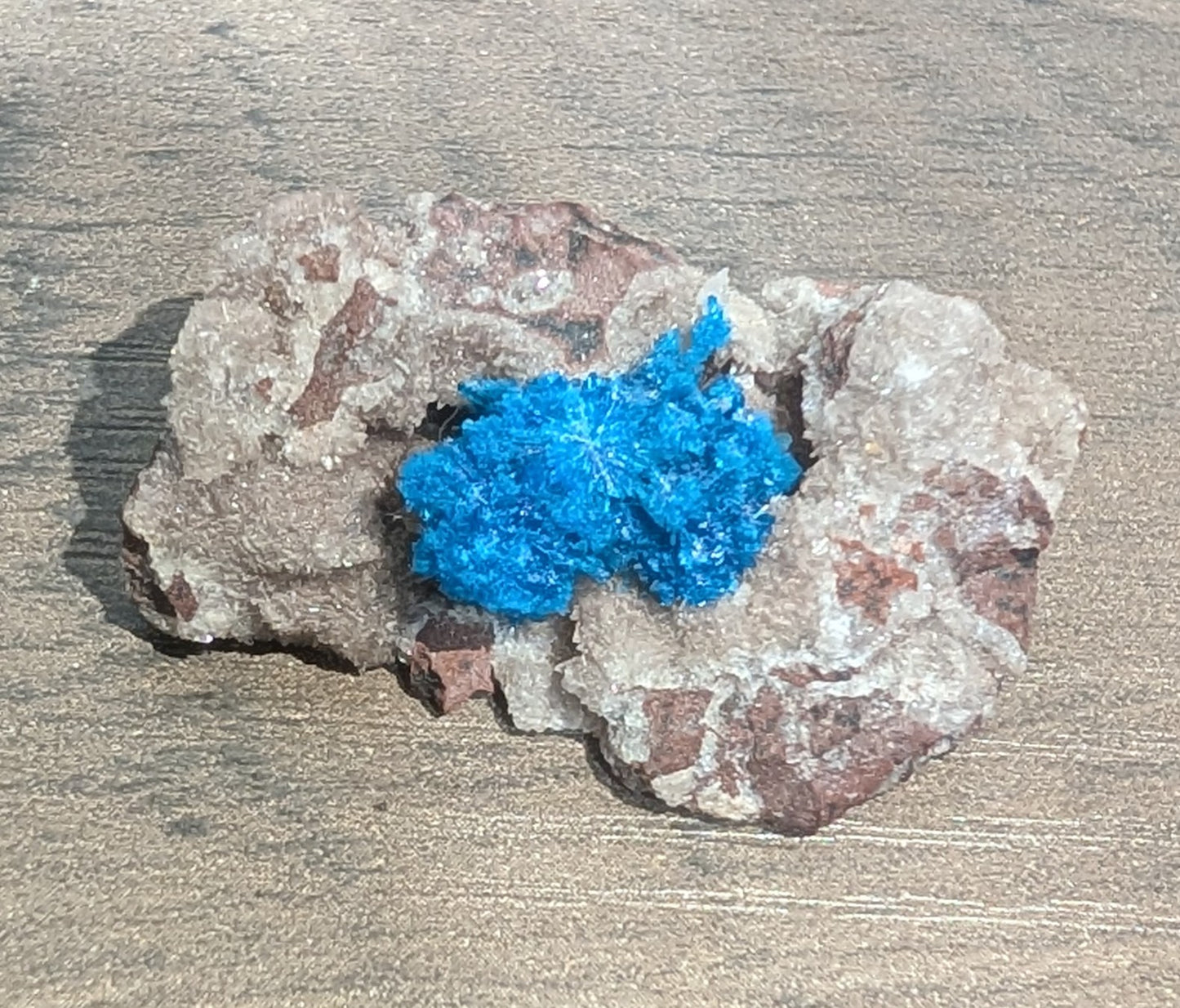Auglocqnuk
Pentagonite on Heulandite
Pentagonite on Heulandite
Couldn't load pickup availability
Pentagonite on heulandite is a rare mineral specimen characterized by greenish-blue pentagonite crystals growing on a matrix of sparkly gray heulandite. The pentagonite crystals often form radiating clusters and are known for their distinctive twinning, which creates a pseudo pentagonal symmetry, giving the mineral its name. This specimen typically originates from the Pune district of India, specifically the Wagholi quarries, a known locality for these minerals. The heulandite matrix provides a striking contrast to the vibrant pentagonite, enhancing the specimen's visual appeal.
What makes pentagonite on heulandite unique is its rarity, the specific geological conditions required for its formation, and the aesthetic contrast between the vibrant greenish-blue pentagonite and the sparkly heulandite matrix. The co-occurrence of pentagonite with other zeolites like stilbite and calcite, and its formation sequence within the Deccan Volcanic Province, further highlights its geological significance.
How do cavansite and pentagonite differ?
Cavansite and pentagonite are dimorphs, meaning they share the same chemical composition, Ca(V⁴⁺O)Si₄O₁₀·4H₂O, and are both calcium vanadium phyllosilicates with a vibrant blue color due to the presence of vanadium in the +4 oxidation state. They crystallize in the orthorhombic system and are found in similar geological environments, primarily within the Deccan Traps of India and a few other locations like Oregon, USA. Despite their similarities, they differ significantly in their crystal structure, physical appearance, and formation conditions.
The most notable difference lies in their crystal habit and morphology. Cavansite typically forms spherulitic rosettes, which are compact, ball-like clusters of short, blunt, needle-like crystals. In contrast, pentagonite also forms from spherulitic rosettes but grows into distinct, individual, elongated prismatic crystals with pointed terminations that can extend up to several centimeters in length. These elongated crystals are often described as acicular and can exhibit a characteristic five-branched, pentagon-like cyclic twinning, which is a key identifier for pentagonite. This twinning is not observed in cavansite.
Their physical properties also differ. Pentagonite generally exhibits a deeper, more intense ultramarine blue color compared to the brighter, teal-blue hue of cavansite. The structural differences between the two minerals are profound. Cavansite has a more compact structure with 8-membered rings of SiO₄ tetrahedra joined by 4-membered rings, and its calcium atoms are coordinated by eight oxygen atoms, four from silicate sheets and four from water molecules. Pentagonite has 6-membered rings of SiO₄ tetrahedra, and its calcium atoms are coordinated by only seven oxygen atoms, with one water molecule hydrogen-bonded to other water molecules and silicate oxygen atoms. This structural difference results in cavansite having a lower ground-state energy and a slightly smaller volume (about 2.7% less) than pentagonite.
These structural and energetic differences explain their relative rarity. Cavansite is more common and is considered a low-temperature form, while pentagonite is rarer and is thought to form under higher-temperature conditions. Theoretical studies suggest that the lower energy state of cavansite makes it the more stable phase under typical conditions, and the probability of pentagonite formation is very low at temperatures below 650K. The water molecules in cavansite are also less tightly bound than those in pentagonite, making them easier to remove, which may influence their stability and formation.
Due to their visual similarity, misidentification is common in the mineral market, and the term "pentagonite" is sometimes used abusively to justify higher prices for specimens that are actually cavansite. Without specialized analysis, such as X-ray diffraction, it is impossible to definitively distinguish between the two based on appearance alone.
Share


